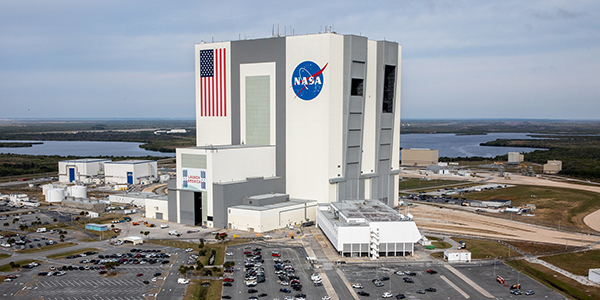Volume 10 | Issue 3

In pursuit of its mission objectives, the National Aeronautics and Space Administration (NASA) is often pushing the boundaries of what has been done before, needing many technologies to either enhance current capabilities or enable new capabilities. To succeed, NASA must engage the technical community and manufacturing companies both within and beyond the aerospace sector. These in particular include manufacturers involved in developing advanced materials, sensors, controls, and communications systems. In addition, NASA’s own internal R&D effort generates several hundred new inventions each year and we actively seek manufacturing partners to bring these to non-NASA applications.
NASA’s Innovative Partnerships Program (IPP) is a facilitator and catalyst for innovation in both of these directions: technology infusion to provide technical solutions to some of the challenges being faced by NASA’s programs and projects; and technology transfer – or spinoffs – to provide solutions to non-NASA technical challenges in the private sector or other government agencies with NASA-developed technology. IPP achieves these objectives through a network of offices at each of NASA’s 10 field centers.
As a result of this dynamic innovation process, technology flows in both directions – into and out of NASA. Numerous NASA missions – including high profile examples like the Mars Exploration Rovers Spirit and Opportunity, and returning the Space Shuttle to flight after the Columbia accident – have infused SBIR technologies providing important contributions to mission success.
NASA has transferred more than a thousand technologies that improve the quality of life for the American public. For example, a water filtration system providing safe, affordable drinking water around the world is the result of work done by Marshall Space Flight Center engineers who are creating advanced life support systems for the International Space Station. Laser tracking technology developed for docking in space resulted in a new eye-tracking device for LASIK surgery, measuring eye movements at a rate of 4,000 times per second – four times the established safety margin.
A Dynamic Innovation Process
Innovation in this context is an ongoing dynamic process with many simultaneous activities and organizations involved, seeking to match technology needs with technology capabilities. In addition to the programs and projects at the NASA field centers, organizations involved include small businesses, other government agencies and their laboratories, universities and research institutions, and industry. Within the industry sector, emerging firms entering the space industry and entrepreneurial small manufacturers (or divisions of large companies) make particularly good partners for NASA’s programs.
There are many activities undertaken to support the dynamic partnering process, starting with identifying a need, locating potential sources of technology or innovation to address that need, facilitating the connection between potential partners and the negotiation that leads to an agreement. The most important IPP role in the process is facilitation, identifying technological needs, forming relationships and creating opportunities for making connections between sources that can fulfill those needs. NASA’s TecFusion Forums are a good example. These forums actively connect the needs of large companies in various industry sectors with technologies developed by small businesses through NASA funding.
NASA Technology Needs
To identify NASA’s technology needs, IPP works closely with NASA’s Mission Directorates: the four NASA organizations responsible for investments in flight missions and technical projects to achieve the agency’s goals in space exploration, space science,aeronautics and space operations. IPP communicates those needs through an annual solicitation for its Small Business Innovative Research (SBIR)/Small Business Technology Transfer (STTR) program, developed in close coordination with NASA’s Mission Directorates, programs, projects and field centers. In addition, there are industry workshops and focused activities conducted by the Mission Directorates to communicate their needs and challenges.
Another activity to motivate partnerships is the IPP Seed Fund, an annual solicitation from the IPP Office to enhance NASA’s ability to meet Mission capability goals by providing leveraged funding to address technology barriers via cost-shared co-development partnerships. To participate in this program, companies must team with one of the NASA field centers to work on projects of mutual value, since both parties contribute to the work undertaken, often without money exchange. In the ideal case, the approximate value of the contributions from NASA and the company are the same. A successful partnership should lead to further NASA program investments to integrate the technology into the NASA mission. And we envision that the company may also be in a position to introduce new products from the joint development effort.
Creating Partnerships
For a potential partnership, NASA’s offerings could include technology, access to NASA facilities or expertise, and of course funding. Partner offerings could include technology, services, intellectual property, and so forth. There are numerous mechanisms that could be employed to effect a partnership, from licensing to contracts
or grants, to space act agreements. NASA has unique authority for partnership agreements, known as Space Act Agreements, which have enabled NASA a long history of collaboration as part of the agency’s mandate.
For a partnership to be successful, each of the partners must perceive that the partnership provides good value, where the benefits derived from the partnership greatly exceed the costs of entering into the partnership. The IPP office works with NASA researchers and partner companies to transition initial partnerships into important NASA mission applications and to viable industrial or commercial applications whenever possible. Our underlying objective is that initially perceived partnership benefits become reality.
Douglas A. Comstock is director of the Innovative Partnerships Program, National Aeronautics and Space Administration To learn more about NASA’s Innovative Partnerships Program, or to explore potential areas of interest for partnership with NASA, please go to http://www.ipp.nasa.gov
Scott Ellyson, CEO of East West Manufacturing, brings decades of global manufacturing and supply chain leadership to the conversation. In this episode, he shares practical insights on scaling operations, navigating complexity, and building resilient manufacturing networks in an increasingly connected world.